As usual, the latest "flagship killer" from OnePlus packs a punch, providing more value per dollar than any other high-end handset on the market. The device starts at $549, and if you want to go somewhere else, a device with these specs will run you at least $800.
It packs Qualcomm's Snapdragon 845 chipset, up to 8GB RAM, and up to 256GB of internal storage. On top of that, it has an in-display fingerprint sensor that claims to be the fastest in the world, dual rear cameras, and more.
The last smartphone from OnePlus that I reviewed was the One, its debut handset that required an invitation to purchase it. Promising that its fans would "Never Settle", I found myself settling quite a bit, but the firm has come such a long way since then. And indeed, the 6T is the first OnePlus device to be offered from a U.S. carrier, specifically T-Mobile.
Specs
| CPU | Snapdragon 845, quad-core 2.8GHz Kryo 385 Gold, quad-core 1.7GHz Kryo 385 Silver |
|---|---|
| GPU | Adreno 630 |
| Display | 6.41 inches, 1,080 x 2,340, 402ppi, AMOLED |
| Body | 157.5 x 74.8 x 8.2mm (6.20 x 2.94 x 0.32in), 185g (6.53oz) |
| Camera | 16MP + 20MP, Front - 16MP |
| Aperture | f/1.7 + f/1.7, Front - f/2.0 |
| Video | 4K - 60fps, Front - 1080p - 30fps |
| Camera features | OIS, PDAF, dual-LED flash |
| RAM | 6GB/8GB |
| Storage | 128GB/256GB |
| Battery | 3,700mAh |
| OS | Android 9.0 Pie |
| Price | $549/6GB/128GB $579/8GB/128GB $629/8GB/256GB |
The model that OnePlus sent me has 8GB RAM and 128GB of storage.
Day one
Design
The OnePlus 6T comes in two colors: Mirror Black and Midnight Black. There's a third color called Thunder Purple, but it doesn't seem to be available, at least in the U.S. Mirror Black and Midnight Black really sound like the same thing, but they're not.

Mirror Black is glossy, and Midnight Black is more of a matte color that isn't really black at all. Midnight Black is more of a grayish silver, which kind of makes me wonder if we're talking about midnight at the North Pole in the summer. But I digress; the model that OnePlus 6T is Midnight Black, and I think I'd prefer Mirror Black. Frankly, the matte finish feels a bit dull after the fun of that metallic 'S' shape wears off.
The benefit of Midnight Black, however, is that it's much less susceptible to fingerprints. This is always the downside to a glossy finish and the benefit of a matte finish.
While the Midnight Black almost looks like it's made of aluminum, it's not. The OnePlus 6T is a glass sandwich with a metal frame. Unfortunately, it still doesn't support wireless charging. I take issue with this, as switching from metal to a glass back only has one real benefit, which is wireless charging. If you don't add the feature, then the handset is more breakable just so it can be a bit prettier.

In the center of the back, at the top, is the vertically aligned camera housing. Below that is the dual-LED flash, which sits on top of the OnePlus logo. At the bottom is the message, "Designed by OnePlus".

On the right side of the device, there's a power button and a switch for the ringer. I've only seen this type of physical switch on iPhones, and I absolutely love it. The switch has three positions: ring, vibrate, and silent. It just makes it so easy to turn your ringer off when you need to.

The left side is where the volume rocker is located, and on the bottom, there's a USB Type-C port and two grills, one of which is a speaker. It's the grill on the left, and it's horribly placed. It makes it really awkward to hold the phone in landscape orientation, as your hand is likely to block the speaker. And when you block that speaker, the difference in audio is drastic; it's not like other phones that pump out audio from the speaker in the display. This is tough because this is how you'd hold the phone to watch videos or play games.
Display
The OnePlus 6T has a 6.41-inch AMOLED display with a 19.5:9 aspect ratio. While that sounds big, it's really not as large as it sounds, especially since it has really slim bezels. Remember, 6.41-inch doesn't mean what it used to when phones were 16:9. These things are measured diagonally.

The display has a teardrop notch, and what's cool is that OnePlus actually has decent facial recognition. Typically, if you want facial recognition that can't be fooled by a selfie, a larger notch is needed for additional sensors. OnePlus manages to achieve a similar effect with just the front camera, so this display has one of the more attractive notches around without making compromises.
The display looks pretty good, with vibrant colors and true blacks. In fact, it's probably the best display that you're going to get for the price. AMOLED, or active matrix organic light-emitting diodes, allows pixels to be turned off, which is why you get those true blacks. Colors rendered on top of that instead of a backlight cause them to look more vibrant and sometimes saturated.

OnePlus also offers an ambient display, which will tell you the time, date, your battery status, and notification badges. The information pops up when you lift the device, so it's not on if you're not handling it, saving battery life a bit.
In-display fingerprint sensor
One more thing about the display is that it has a fingerprint sensor built into it. Yes, the feature that has been rumored for different devices for years is finally here. It's pretty much the coolest thing ever, and when you show your friends your cool new gadget, well, they won't care. But it's still cool; trust me.

OnePlus promised that the in-display fingerprint sensor is the first in the United States and the fastest in the world. While it's certainly not the first in the world - Huawei uses one in its Mate 20 Pro, and there are others - it's definitely the first in the United States.
I also think OnePlus wasn't overstating itself when it said that it was the fastest in the world. I've only tried the Mate 20 Pro aside from this one when it comes to in-display fingerprint sensors, and this is much faster. The reason that's a good example for me is that historically, Huawei devices have had the best fingerprint sensors in my experience. For another company to use one that's better, that's a huge deal.
It's more accurate as well. I don't know if it's the placement of the sensor under the display, the size of it, or if it's just better, but with the Mate 20 Pro, I constantly have to adjust my finger. With the OnePlus 6T, it works almost every time.
That being said, the fingerprint sensor isn't throughout the whole display. You have to press your finger on the icon that presents itself, which is located in the bottom-center of the screen.
The only time it really doesn't work is when the device wants you to enter your PIN for security reasons. This is kind of a pain, given that there's no clear indication at first as to why the fingerprint sensor isn't working.
Another thing to note is that the fingerprint sensor only works if the ambient display is on. It should wake when you lift it, but if it doesn't, it won't read your finger. I find that the best bet is to have facial recognition turned on as well. That way, one of the two things will recognize you.
Fragmentation of navigation
I may start including a section like this in all of my smartphone reviews because navigation on Android is starting to become a mess. Remember the old days when there was just home, back, and multitasking buttons? Those days are gone. Companies like Huawei and Motorola have implemented different methods of one-button navigation, and Android Pie adds gesture-based navigation.

The OnePlus 6T is actually pretty smart about how it does navigation, as you have three options. You can set it to what you're used to with the three buttons, you can set it to the gesture-based navigation that you'll find on the Google Pixel, or you can set it to navigation gestures as you'd find on an iPhone.
Personally, I like the Pixel-style navigation. I do like a gesture-based UI, but the iPhone-style one goes a bit too far, and it really doesn't work that well. It feels confusing and forced. The Pixel-style navigation works as it should. You press the home button to go home, or swipe up to go to the multitasking screen. There's also an included back button, as some apps don't have their own.
I really appreciate that OnePlus includes the ability to choose between all three, because navigation fragmentation is really becoming a thing. I miss the days when you could pick up a new device and immediately know how to use it without having to retrain your muscle memory.
Camera
Not much has changed on the OnePlus 6T camera since the OnePlus 6. The lenses are the same 16 megapixels and 20 megapixels, with f/1.7 apertures. The secondary lens offers 2X zoom, and they both have phase detection autofocus.
The good thing about a 2X zoom lens is that you get to zoom without losing quality. A full-sized camera would zoom by moving the lenses further apart or closer together. There simply isn't that kind of space in a smartphone camera. The lens can see a fixed amount, and that field of view is made up of a certain amount of pixels. Digital zoom is basically cropping the picture, so with a second lens with a smaller field of view, you can zoom without making those sacrifices.
There's also a new night mode, a feature that's becoming increasingly popular across devices. It was first found in Huawei phones, and what it does is it leaves the shutter open for two seconds to allow in more light. This doesn't just work at night either. If the lighting is behind your subject so the subject appears dark, try out night mode, as it should lighten up the subject pretty well.
Very few parts of the OnePlus 6T are best-in-class, and the camera is no exception to that. Well, unless the class is $549 smartphones. The truth is that if you're competing with flagship phones, and I think that's what OnePlus is aiming for when they call it a flagship killer, this device doesn't measure up. It's really all about value in this case.
There are some things that the OnePlus 6T does quite well. The images from Times Square came out great, the way that all of the lights are sharp but you can still see the faces of the people in the photo. Many times, these images would be metered in such a way that they can focus on either the people are the lights, but not both.
Night mode isn't quite as good as you'll find on some other devices, although it's more useful to have it than to not have it. You can see that the statue that I tried to use it on still looks pretty dark.
Performance
Performance, on the other hand, is one area where the OnePlus 6T shines. With a Qualcomm Snapdragon 845 and 8GB RAM, it performs better than most Android flagships, or any of them in the United States. The only devices that will perform better are iPhones and Huawei handsets.
But as I point out endlessly in smartphone reviews, that doesn't really matter. Flagship smartphone processors have gotten to the point where they provide more power than most people need. Sure, if you're doing a lot of gaming, then you might want the extra boost, along with the extra RAM, but that's about it. I've even considered removing this portion from my reviews of flagship smartphones.
One thing to note about the Snapdragon 845 is that the camera can now record 4K 60fps video, something that wasn't supported by the 835. This is kind of a big deal, as you no longer have to choose between a high resolution and a high frame rate. And since even the base model comes with 128GB of storage, you can record all you want.
For benchmarks, I used Geekbench 4, AnTuTu, and GFXBench. First up is Geekbench 4, which tests the CPU.

Qualcomm typically releases its flagship chipset at the beginning of the year, and it usually shows up first in Samsung's Galaxy S. This year was no different, which means that we've seen a ton of devices shipping with similar specs to the OnePlus 6T. In other words, nothing really changed with these benchmarks. The iPhone Xs Max, by comparison, gets a 4,798 single-core score and a 10,731 multi-core score.
But on the other hand, you'll see scores similar to this on every other phone that came out in the U.S. this year, including the Samsung Galaxy S9, Note9, LG G7 ThinQ, V35 ThinQ, V40 ThinQ, HTC U12+, Google Pixel 3, Pixel 3 XL, and so on.
Next up is AnTuTu, which tests a bit of everything.

The story here is the same. It doesn't get beaten by the iPhone by as much, as the Xs Max scored 312,687 on AnTuTu. But once again, the score is the same, if not a bit higher, than competing Android phones.
Finally, GFXBench tests the GPU.

Once again, everything scores as expected, and there are no surprises here.
Conclusion
Most devices that include a Snapdragon 845 chipset will run you at least $800. At that price, you could get yourself a Razer Phone 2. For another $150, you can get an LG V40 ThinQ. So the question is, how much do you want to spend.
People love to pretend that the OnePlus 6T is on par with these devices, but it's really not. It has the performance, a nice display, and a good camera; however, the Razer Phone has a 120Hz display, and the V40 ThinQ has a better OLED panel, a 3.5mm audio jack with amazing sound quality, and a better camera. And both of those devices have wireless charging.

The OnePlus 6T is an awesome device, but I want to make it clear that the $549 price tag doesn't come without compromises. I really love this phone, and if you buy it, you'll probably love it too. Particularly, I love the in-display fingerprint reader. It's one of those things that we've seen in rumors, leaks, and patents for years, and now these things are finally starting to show up in devices.
Do you need to spend a thousand dollars on a phone? Almost certainly not. Chances are, the OnePlus 6T is the perfect phone for you, with the right combination of price and features.

















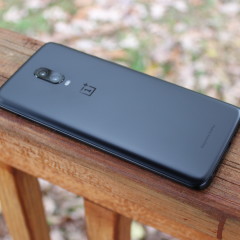
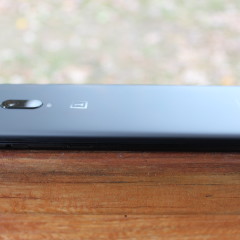

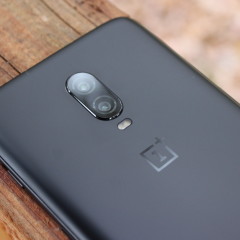
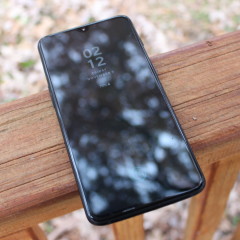

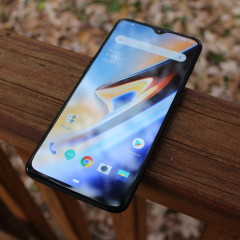
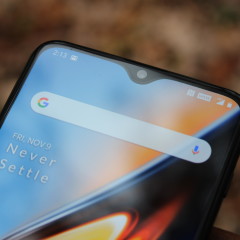



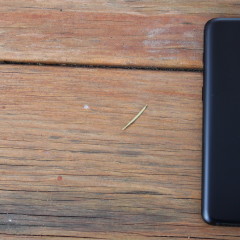








53 Comments - Add comment